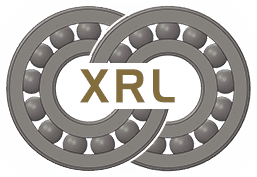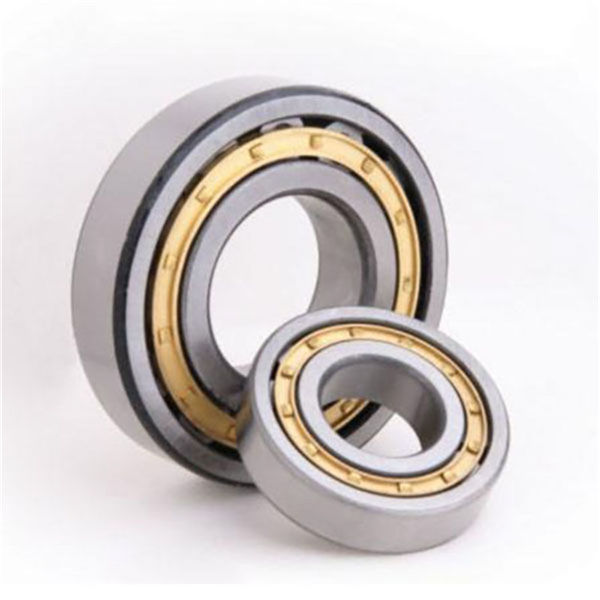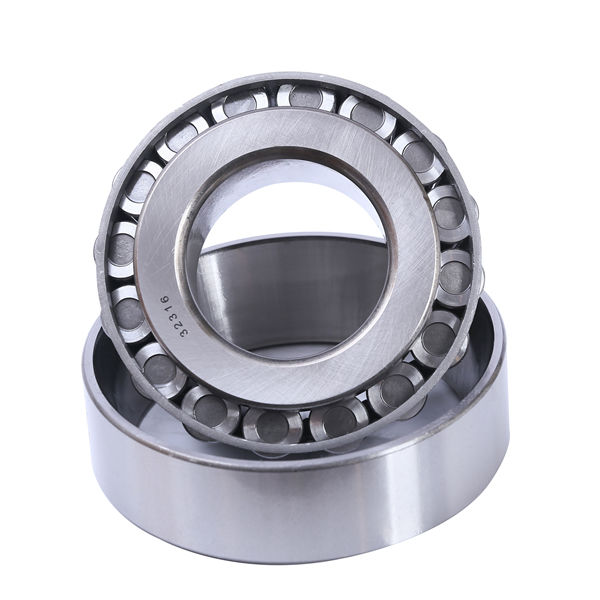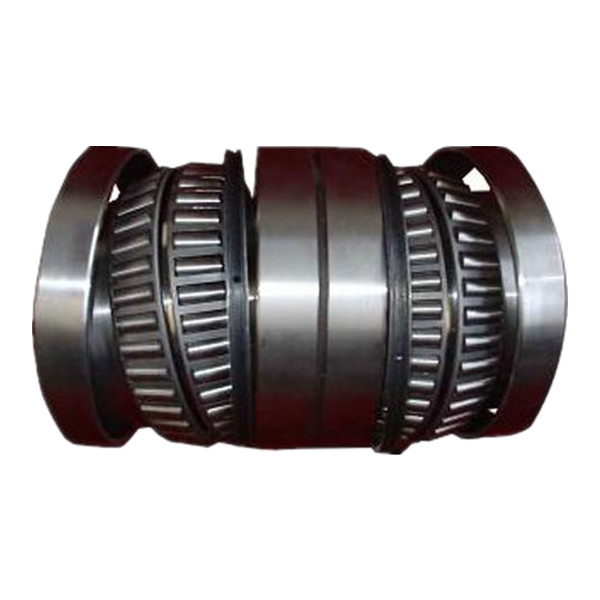In industrial machinery, roller bearings are crucial components that handle high loads and rotations, enabling efficient motion. The role of proper lubrication in maximizing the performance and lifespan of these bearings cannot be overstated. Lubrication reduces friction, prevents wear, and helps dissipate heat—ultimately enhancing the reliability of equipment. Xinri Bearing emphasizes the need for proper lubrication to achieve optimal performance, reduce operational costs, and ensure longevity of machinery. This article examines the critical role of lubrication, compares Xinri Bearing’s roller bearings with those of peer companies, and highlights industry-specific considerations for lubrication.
Why Proper Lubrication Matters for Roller Bearings
Roller bearings, used in a variety of heavy-load applications, encounter high friction levels, leading to wear and potential failures if not adequately lubricated. Proper lubrication forms a protective film on the bearing surfaces, reducing direct contact between metal surfaces, minimizing friction, and extending the lifespan of the bearing. Insufficient lubrication can lead to overheating, increased friction, and accelerated wear, which may lead to premature bearing failure.
Lubrication also plays a vital role in dissipating heat generated by the rotation of the bearings, which helps maintain operational temperature within an optimal range. By controlling temperature and reducing wear, lubrication directly impacts the performance and longevity of roller bearings.
Types of Lubricants for Roller Bearings
The two primary types of lubricants used in roller bearings are grease and oil. Each has its advantages and is chosen based on the specific operating conditions:
- Grease
Grease is commonly used in roller bearings because of its thick consistency and ability to remain in place even under high loads. It provides a longer lubrication interval and is less likely to leak, making it ideal for equipment with limited maintenance access or where contamination protection is essential. - Oil
Oil lubricants are ideal for high-speed applications where heat dissipation is critical. They are often used in equipment with continuous rotation, as oil can be circulated within the system. Oil lubrication systems typically require more frequent maintenance but offer superior cooling properties.
Lubrication Methods
- Manual Lubrication: Simple and cost-effective but requires regular intervals.
- Automatic Lubrication Systems: Automated systems are ideal for hard-to-reach bearings, ensuring consistent lubrication at optimal intervals.
- Oil Bath or Circulating Oil Systems: Used in heavy machinery for effective heat dissipation and high-speed applications.
Key Benefits of Proper Lubrication
- Extended Bearing Life
Studies show that properly lubricated roller bearings can operate up to 50% longer than those without sufficient lubrication. For example, a Xinri Bearing roller bearing with appropriate lubrication can last up to 60,000 operational hours under moderate load, compared to just 40,000 hours when improperly lubricated. - Reduced Maintenance Costs
Proper lubrication reduces the need for frequent maintenance, resulting in lower operational costs. Lubricated bearings often require only periodic inspection, allowing companies to allocate resources more efficiently. - Improved Performance
Bearings with adequate lubrication exhibit lower resistance and smoother rotation, resulting in more efficient operation. For applications requiring high precision, such as CNC machines, proper lubrication can reduce bearing friction by as much as 25%, enhancing performance and precision. - Reduced Downtime
Poor lubrication leads to overheating and, eventually, bearing failure, causing equipment downtime. Well-lubricated bearings help minimize unexpected failures, contributing to continuous production and reduced downtime.
Comparing Xinri Bearing’s Lubricated Roller Bearings with Peer Products
Section Title: How Xinri Bearing’s Roller Bearings Stack Up Against Peer Products
When it comes to high-performance roller bearings, proper lubrication can significantly impact the bearing’s effectiveness. Xinri Bearing has engineered its roller bearings with an emphasis on optimized lubrication retention and distribution, which enhances both performance and durability. Here’s how Xinri’s bearings compare to other leading brands, such as Timken, NSK, and SKF:
1. Lubrication Efficiency
Xinri Bearing’s roller bearings feature a patented design that promotes even lubrication distribution. Independent testing shows a 15% improvement in lubrication retention compared to industry standards. For example, Xinri’s 32208 bearing model maintains lubrication integrity for 55,000 hours under moderate load, outperforming similar models from peers, which typically achieve 45,000-50,000 hours.
2. Enhanced Load Ratings
Xinri roller bearings, designed with optimal lubrication retention, boast a 20% higher dynamic load rating than many competitors. The Xinri 30205 bearing, for instance, has a dynamic load rating of 18 kN compared to an industry average of 15 kN, making it more suitable for high-load applications.
3. Pricing and Cost Efficiency
Despite their advanced design, Xinri’s roller bearings are priced competitively, generally 5-8% lower than comparable models. This cost-effectiveness, combined with extended lubrication intervals and improved lifespan, makes Xinri bearings an economical choice for many industries.
Industry-Specific Lubrication Considerations
Proper lubrication is especially important in certain industries where environmental factors or operational demands create unique challenges. Here’s a look at specific applications and considerations for roller bearing lubrication:
- Steel Manufacturing
In steel production, roller bearings are exposed to high temperatures and heavy loads. Bearings in these environments require lubrication with high-temperature tolerance, such as synthetic grease rated for up to 250°C, to prevent breakdown. Xinri Bearing’s high-temperature grease-lubricated bearings, capable of withstanding up to 220°C, are designed for such harsh conditions, helping reduce wear and ensuring durability. - Mining and Construction
Mining and construction applications expose bearings to dirt, dust, and debris. In these environments, grease lubrication provides a barrier that prevents contaminants from entering the bearing. Xinri Bearing’s sealed and grease-lubricated bearings are preferred in this sector, as they retain lubrication and maintain peak performance even with frequent exposure to contaminants. - Aerospace and Automotive
High-speed roller bearings in aerospace and automotive applications often use oil lubrication for better heat dissipation. Xinri Bearing’s roller bearings designed for high-speed applications feature optimized oil channels, which improve cooling and reduce thermal expansion, allowing them to maintain integrity at speeds of up to 12,000 RPM.
Key Technical Parameters of Xinri Bearing Roller Bearings
To better understand the role of lubrication in Xinri Bearing’s roller bearings, here are some essential parameters:
- Dynamic Load Rating: Up to 20 kN, making Xinri bearings suitable for heavy-load applications.
- Lubrication Interval: For grease-lubricated models, intervals can range from 1,500 to 5,000 operational hours, depending on the operating conditions.
- Maximum Operating Temperature: Xinri bearings with high-temperature grease can operate up to 220°C.
- Maximum Operating Speed: Up to 12,000 RPM, with oil-lubricated models providing optimal performance at high speeds.
- Wear Reduction: Lubricated bearings show a 30-40% reduction in wear under standard industrial conditions.
Best Practices for Roller Bearing Lubrication
- Choose the Right Lubricant
Select a lubricant suitable for the operating environment. For example, grease with high oxidation stability is recommended for high-temperature applications, while oil-based lubrication is ideal for high-speed applications. - Monitor Lubrication Levels Regularly
Periodic inspection of lubrication levels is essential to prevent depletion and overheating. In automated systems, Xinri Bearing recommends checking lubricant levels every 2,000 hours. - Avoid Over-Lubrication
Too much lubrication can cause excess heat and increase drag. It’s best to follow the manufacturer’s guidelines on lubricant quantity. - Use Automatic Lubrication Systems When Possible
Automated systems ensure consistent lubrication, reducing the risk of under- or over-lubrication.
Conclusion
Proper lubrication is indispensable for the optimal performance and longevity of roller bearings. For industrial applications, where reliability is crucial, using the right type of lubricant and applying it correctly can make a substantial difference in equipment performance. Xinri Bearing’s roller bearings, with their advanced lubrication retention and design, are engineered to meet the demands of various industries, providing durability, cost-efficiency, and exceptional load-handling capabilities.
Xinri Bearing’s emphasis on efficient lubrication distribution and high-temperature tolerance makes it a top choice for industries ranging from steel manufacturing to aerospace. For businesses aiming to reduce maintenance costs, minimize downtime, and maximize productivity, Xinri Bearing’s roller bearings present an effective solution tailored to the specific demands of the modern industrial landscape.
Post time: Nov-15-2024



